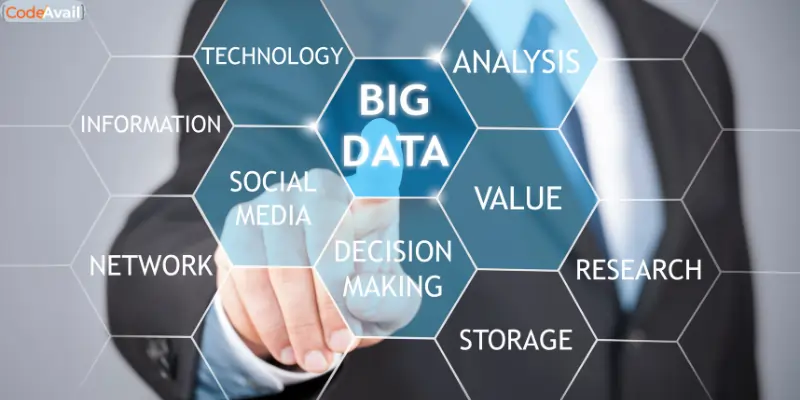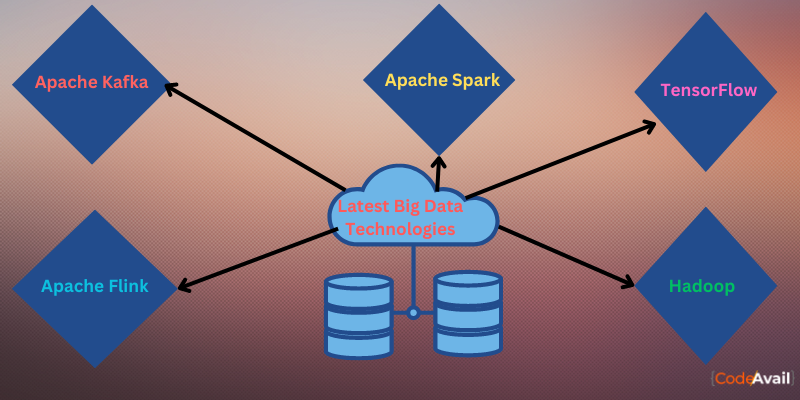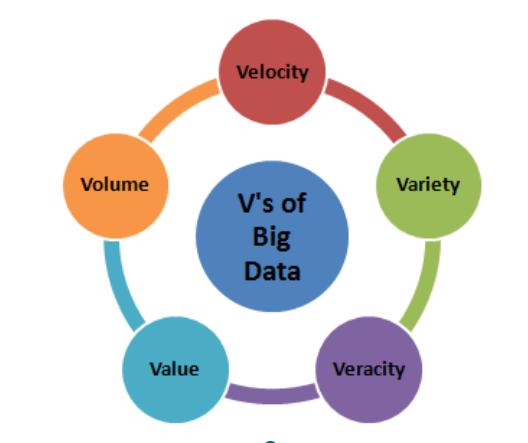The way we live and work has changed dramatically in the last decade. Data is everywhere; every interaction you make with a website, app, or service leaves a digital footprint.
It’s data that companies are recording and using to make better decisions. And, as data becomes ever more pervasive, it’s becoming even more valuable.
“Big data” is a set of huge collections of data that are used for day-to-day activities in our daily lives and for business purposes. E-commerce websites, ticket booking, entertainment, and OTT platforms are just a few examples of big data.
The article provides information regarding technologies available for big data analytics and how they can be applied to every industry.
What are big data technologies?
Table of Contents
Big data technologies are used to collect, store, process, and analyze large amounts of data. There are many different big data technologies, each with its pros and cons. Some popular big data technologies include Apache Hadoop, Apache Spark, and MongoDB.
Each of these big data technologies has its own unique capabilities and features. Choosing the right technology for a particular project depends on the specific needs and requirements of the project.

Why do we need “Big Data”?
We need “Big Data” technologies because our relational database is not capable of managing large amounts of data. The amount of data generated in day-to-day operations is vast and complex, making it difficult to handle and analyze. “Big Data” facilitates the management of vast and large amounts of data, as well as the analysis of the data to produce results in a short period of time.
Also read: small data vs big data
Big Data technology’s board classification
We are defining the term “big data technology” and its board classification as below mentioned.
1. Operational Data
This technology primarily includes the day-to-day data that people used to process. As used in operational big data, which includes daily data from social media platforms (WhatsApp, Facebook, Instagram, and so on) and only transactions (G-Pay, PhonePe, online railway and bus ticket booking platforms, and so on), and data from any particular organization or firm. The data can also be referred to as “raw data” and is used as the input for several analytical big data technologies.
Some specific examples of operational big data technologies include the following:
- The employer’s, employee’s, and client’s particulars in multinational companies
- Online trading or shopping from e-commerce websites, etc.
2. Analytical Big Data Technologies
Analytical big data technologies have advanced to this level. Analytical big data is mainly used when important business decisions are made based on reports created by analyzing operational real time data. The actual expenditure on big data that is important for business decisions falls under this type of big data technology.
Some common examples that involve analytical big data technologies can be listed as follows:
1) Medical records in which doctors personally monitor patients’ health status.
2) Stock Exchange data
Top Big Data Technologies List
1. Data storage
Because big data technology is concerned with data storage, it has the ability to retrieve, store, and manage large amounts of data. So, that it is convenient to access because it is made up of infrastructure that allows users to store the data. Most data storage platforms are compatible with different programs. Apache Hadoop and MongoDB are both popular tools.
MongoDB: The NoSQL database MongoDB may be used to store massive amounts of information. MongoDB organizes documents into collections by assigning them keys and assigning values to those keys. It’s one of the most popular big data databases because of how easily it handles and stores unstructured data, and it’s built in C, C++ programming, and JavaScript.
Apache Hadoop: The most popular big data tool is Apache Hadoop. It’s a free and open-source software platform for managing large datasets in a distributed data center. By separating the data in this way, it can be processed more quickly. The framework can handle any kind of data, is scalable, and was built to minimize errors.
2. Data mining
From the raw data, data mining identifies interesting patterns and trends. Unstructured and structured data can be converted into usable information using big data technologies such as Presto and RapidMiner.
Presto: Presto is an open-source query engine that was made by Facebook to run analytical queries on their massive data. Now, a lot of people can get it. With just one query on Presto, an organization can combine data from many different sources and analyze it in a matter of minutes.
Rapidminer: Rapidminer is a tool for mining data which can be used to make models that can predict what will happen. It uses its strengths in handling and arranging data and building models for machine learning techniques. The end-to-end model lets both functions have an effect on the whole institution.
3. Data analytics
Technologies based on big data analytics are used to make the best business decisions in the shortest amount of time, and they are also used to clean and transform data into information that helps make business decisions. Users perform algorithms, models, and more using tools such as Apache Spark and Splunk after data mining.
Apache Spark: Spark is a prevalent tool for analyzing big data since it runs applications quickly and well. It works faster than Hadoop because it utilizes random access memory (RAM) rather than MapReduce, which stores and processes data in batches. Spark can be used for many different data analysis responsibilities and queries.
Splunk: Splunk is another well-known tool for analyzing large amounts of data to find insights. You can make graphs, charts, reports, and dashboards with it. Splunk also lets users add artificial intelligence (AI) to the results of data searches.
4. Data visualization
Data visualization is a useful skill for presenting recommendations to stakeholders for business profitability and operations—the ability to tell an impactful story with a simple graph.
Tableau: Tableau is an extremely prevalent data visualization tool. Its drag-and-drop functionality makes it simple to create pie charts, bar charts, box plots, Gantt charts, and more. It is a safe platform where users can share dashboards and visualizations in real time.
Looker: It is a business intelligence (BI) tool for making sense of big data analytics and then start sharing that information and insight with other team members. With a query, you can set up charts, graphs, and dashboards. For example, you could use social media analytics to track how much engagement a brand gets each week.
- Blockchain
Blockchain is an excellent example of big data technology. Blockchain is the designated database technology that carries Bitcoin digital currency and has the unique feature of secure data; once written, it can never be deleted or changed later.
Blockchain is a highly secure ecosystem and an amazing choice for various applications of big data in the industries of banking, finance, insurance, healthcare, retailing, etc.
Blockchain technology is still in the development stage; however, many merchants from various organizations like AWS, IBM, and Microsoft, including startups, have tried multiple experiments to introduce the possible solutions in building blockchain technology. With different forms of how to get cryptocurrency, users should get involved in this new technology currently making changes in the financial world.

What is the latest big data technologies?
There are many big data technologies that are currently being developed and used by businesses and organizations around the world. Here are a few examples of some of the latest big data technologies:

- Apache Kafka: Kafka is a distributed streaming platform that allows you to publish and subscribe to data streams. It can handle high volumes of data in real-time and is often used for processing and analyzing large amounts of data.
- Apache Spark: Spark is a fast and powerful open-source big data processing framework that can handle both batch and real-time processing. It is designed to work with large data sets and can run on a variety of platforms, including Hadoop, Apache Mesos, and Kubernetes.
- TensorFlow: TensorFlow is an open-source software library developed by Google for machine learning and artificial intelligence. It is often used to build deep neural networks and other types of machine learning models.
- Apache Flink: Flink is an open-source stream processing framework that can process large volumes of data in real-time. It can be used for a variety of use cases, including event-driven applications, real-time analytics, and machine learning.
- Hadoop: Hadoop is an open-source software framework that is used for distributed storage and processing of big data sets. It is often used in combination with other big data technologies, such as Spark and Kafka.
Below we mention important tools useful for big data analytics.
The key Big Data analytics instruments are:
- NodeXL
- KNIME
- Tableau
- Solver
- OpenRefine
- Rattle GUI
- Qlikview
Note:- if you know about this more then read in detail from google.com
Which five “V’s” Do big data emphasize?

- Volume: The Size and Amount of Information Managed and Analyzed by Businesses
- Value: The value of big data is the most essential “V” from a business’s point of view, often stems from insight finding and pattern identification that result in more efficient operations, better customer connections, and other tangible and measurable improvements to the company’s bottom line.
- Variety: Data comes in a wide variety of forms, some of which are more regulated than others.
- Velocity: Companies’ data acquisition, storage, and management velocities are measured in terms of things like the amount of social media postings or search queries that they get in a given day, hour, or other time period.
- Veracity: In business, the trust of top-level managers typically hinges on the “truth” or accuracy of data and information assets.
Conclusion
The amount of big data is already massive, but it is expected to grow exponentially as new technologies, such as the more pervasive IoT devices, drones, and wearables, jump into the fray.
In the last two years, 90 percent of the world’s big data has been generated, and recent advances in deep learning are playing an important role in assisting businesses in decrypting this valuable goldmine information.
Big data and business analytics solutions are now mainstream technologies, and together with AI and automation, they represent the foundation upon which the digital transformation process is built.
FAQ (Frequently Asked Questions)
What is Big Data?
Big Data refers to a large volume of structured, semi-structured, and unstructured data that is generated at a high velocity from various sources. This data can be analyzed for insights that can be used to inform business decisions, optimize processes, or gain a deeper understanding of patterns and trends.
What are the common Big Data Technologies?
Some of the common Big Data Technologies include Hadoop, Spark, NoSQL databases, data warehouses, and data lakes. These technologies are used for data storage, processing, analysis, and visualization.
How do Big Data Technologies handle data processing and storage?
Big Data Technologies handle data processing and storage by distributing the data across multiple nodes and processing it in parallel. This allows for faster processing and better scalability. The data is often stored in distributed file systems or NoSQL databases.
What are the benefits of using Big Data Technologies?
The benefits of using Big Data Technologies include the ability to process and analyze large volumes of data quickly, identify patterns and trends that were previously unknown, make data-driven decisions, and optimize processes to improve efficiency and productivity.
What are some challenges and limitations of Big Data Technologies?
Some of the challenges and limitations of Big Data Technologies include the need for specialized skills to set up and maintain the technologies, the high cost of implementation, potential data privacy and security risks, and the difficulty in processing and analyzing unstructured data.
